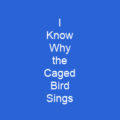Maya Angelou: A Literary Giant
Imagine a writer whose words have the power to break chains and inspire generations—this is Maya Angelou. Born in 1928, she left an indelible mark on American literature with her powerful autobiographies. Her life story is as complex and rich as the themes she explored: racism, identity, family, and travel. Let’s dive into the world of this remarkable woman who used her experiences to craft a legacy that continues to resonate.
The Metaphor of the Caged Bird
One of Angelou’s most famous metaphors is the caged bird, which first appeared in her groundbreaking autobiography I Know Why the Caged Bird Sings. This metaphor isn’t just about a bird trapped; it’s a symbol of human struggle against oppression. The bird sings even as it struggles, much like Angelou herself, who found strength and voice amidst adversity.
Evolution of Themes
Angelou’s works evolved over time, reflecting her changing views on race relations and personal life. Family, travel, and psychic mobility were central to her writing. She used her experiences as a civil rights worker, journalist, actress, and educator to inform her narratives, creating a rich tapestry of stories that span almost four decades.
Political Protest Literature
Angelou’s autobiographies can be classified as political protest literature. They highlight the injustice of racism and emphasize the importance of resisting oppression. Her books are not just personal accounts but powerful statements against societal ills, making her a voice for change.
The Writing Ritual
Angelou’s writing process was meticulous. She checked into hotels with minimal decor, played solitaire, and used Roget’s Thesaurus to craft her words. Her goal was to tell the truth about the lives of black women, using her experiences as a single mother, daughter, and granddaughter to explore themes of family and identity.
Impact on African-American Literature
Critic Pierre A. Walker placed Angelou’s autobiographies in the tradition of political protest literature. His analysis highlighted the unity of her works, which underscored one central theme: the injustice of racism and how to fight it. Angelou’s goal was to “tell the truth about the lives of black women,” and she did so with a powerful voice that resonated across generations.
Travel as a Theme
The travel motif in Angelou’s writing is significant. In her third autobiography, Singin’ and Swingin’ and Gettin’ Merry Like Christmas, she explored the theme of travel to understand different worlds and cultures. Her experiences in Ghana further deepened her understanding of African-American identity and its connection to Africa.
Personal Growth Through Travel
In All God’s Children Need Traveling Shoes, Angelou’s journey to Ghana was transformative. She came to terms with her difficult past, both as a descendant of slaves and an African American who had experienced segregation. Her time in Africa helped her find her place in the world, making her more aware of her African roots.
Conclusion
Maya Angelou’s life was a journey of self-discovery and empowerment. Through her powerful writing, she challenged societal norms and inspired countless readers to find their own voices. Her legacy continues to inspire us all to break free from the chains that bind us and sing our truths.

You want to know more about Themes in Maya Angelou?
This page is based on the article Themes in Maya Angelou published in Wikipedia (retrieved on March 11, 2025) and was automatically summarized using artificial intelligence.







